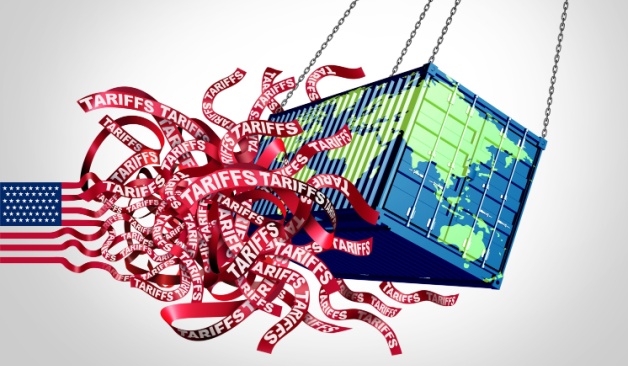Global financial markets started the new week in a cautious mood as investors prepare for a series of important economic reports from the United States and the rollout of new trade tariffs that could shake the global economy. The new tariffs are expected to take effect from August 1, 2025.
This week, the U.S. is set to release key inflation, employment, and manufacturing data — all of which are closely watched by financial analysts and central banks. The outcome of these reports will likely determine whether the U.S. Federal Reserve decides to change interest rates or adjust other financial policies.
At the same time, the U.S. is preparing to implement fresh tariffs on a wide range of imported goods, including industrial machinery, advanced technologies, and parts used in electronics and manufacturing. These new trade restrictions are part of Washington’s global trade reset, which aims to protect American industries but could lead to global supply chain disruptions and rising production costs.
For emerging markets like South Africa, the timing of these developments is troubling. The South African rand has already shown signs of weakness in recent weeks due to global market tensions and investors moving their money to safer assets like gold, the U.S. dollar, or government bonds from more stable countries.
If U.S. inflation data turns out stronger than expected, the Federal Reserve could decide to increase interest rates or delay any planned cuts. This would make U.S. assets more attractive, pulling money away from riskier emerging markets. For South Africa, that could mean further pressure on the rand, as well as increased costs of borrowing for the government and local businesses.
The South African stock market is also not spared. Investors are worried that companies in sectors that depend on global trade — such as mining, manufacturing, and technology — may see a drop in demand or higher operating costs. China, a major buyer of South Africa’s raw materials, is already facing slower economic growth, and the addition of U.S. tariffs could worsen the situation by lowering global trade volumes.
Analysts say even though South Africa does not export large amounts directly to the United States, the indirect effects of U.S. policy changes can be severe. According to Nedbank’s economic research team, what matters more is how international investors react to rising uncertainty — often by selling off emerging market assets and moving into safer investments like U.S. Treasury bonds or Swiss francs.
“South Africa’s exposure is mostly through capital flows and risk sentiment. When investors panic globally, it affects our bond market and currency,” said Thabo Mokoena, a Johannesburg-based economist.
The uncertainty is coming at a difficult time for the country. With the unemployment rate still above 30% and inflation pushing up food and transport costs, the government is under pressure to stabilise the economy ahead of the 2026 general elections.
South African businesses are also feeling the pinch. A manager at a local steel exporting company in KwaZulu-Natal, who preferred not to be named, said: “Even if the tariffs are not on our goods, once global machinery prices go up, our input costs increase, and customers abroad delay purchases. It’s already affecting our supply chain.”
Across global markets, the ripple effects are being felt — from Johannesburg to Jakarta, as investors wait for clarity on both U.S. data and how global leaders will respond to the trade measures.
Meanwhile, central banks in developing countries are preparing their own strategies to protect their economies. Some may raise interest rates, tighten capital controls, or increase foreign exchange interventions to defend their currencies.
As August 1 approaches, global financial watchers agree on one thing: this week could be critical in shaping the direction of world markets for the rest of 2025.
